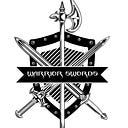The Most Famous Cavalry Swords in History
For millennia, cavalry — warriors on horseback — reigned supreme as the dominant force on battlefields across the globe. From ancient Rome to the farthest reaches of Europe, the Middle East, and America, cavalrymen wielded specialized swords to devastating effect. These weapons, honed for mounted combat, transitioned from tools for piercing armor to instruments of lightning-fast slashes. Today, we delve into the designs, purposes, and legendary swords that shaped the way cavalry charged into battle.
The Hallmarks of a Cavalry Sword
Design and Purpose: Crafted specifically for horseback riders, cavalry swords prioritized balance, speed, and effectiveness in swift attacks. Early iterations featured straight, double-edged blades ideal for piercing heavy armor. Later designs incorporated curved blades that excelled at slashing.
Hand Protection: To safeguard the hands of these mounted warriors, many cavalry swords boasted elaborate guards. European sabres, for instance, commonly included guards that offered both comfort and protection.
Blade Shape: A Critical Choice
- Straight Blades: Pioneering cavalry swords, like the Cataphract swords, featured straight blades designed to pierce through armor.
- Curved Blades: Later iterations, such as sabres and Kilijs, incorporated curved blades that excelled at slashing attacks. The curve facilitated more impactful strikes during high-speed cavalry charges.
Material and Construction: Premium steel was the material of choice for cavalry swords, ensuring both durability and sharpness. These weapons needed to be strong enough to withstand the brutality of combat, yet light enough for agile maneuvers.
The Iconic Slashers
The Sabre: King of the Cavalry Charge (17th-19th Century)
From the 17th to 19th centuries, the sabre, with its iconic curved blade, dominated battlefields. This design excelled at slashing attacks, perfectly suited for cavalry charges against infantry formations. European sabres boasted guards for hand protection, while the Mameluke sabre from the Middle East featured a distinctive guardless design. Napoleon’s cavalry famously wielded sabres during his conquests, and the Crimean War saw these blades clash on countless battlefields. The sabre’s reign as the undisputed king of cavalry weapons is undeniable.
The Kilij: The Ottomans’ Curved Weapon of Choice
The Kilij stands out as a truly unique sword, favored by the Ottoman Empire’s cavalry. Unlike the European double-edged sabres, the Kilij has a single-edged, sharply curved blade. This design prioritized agility and devastating slashing attacks. The Janissaries, elite Ottoman infantry and cavalry units, were renowned for their mastery of the Kilij.
The Power of the Thrust
The Cataphract Cavalry Sword: Ancient Armor Piercer
The Cataphract sword takes us back to ancient times, serving as a brutal weapon designed for one purpose: piercing armor. Heavily armored cavalry units, like the Cataphracts of ancient Persia, wielded this straight, double-edged blade. Imagine the thundering charge of Alexander the Great’s army, their Cataphract swords a symbol of unstoppable force.
The Pattern 1908 Cavalry Sword: A Late Bloomer (British)
The British Pattern 1908 Cavalry Sword presents a fascinating case. This innovative design, featuring a thrusting-oriented blade, is considered one of the most effective cavalry swords ever created. The irony? It arrived just as firearms were rapidly transforming the battlefield, diminishing the role of cavalry. Despite its late introduction, the Pattern 1908 stands as a testament to exceptional sword design.
Beyond Europe: Famous Swords from the East
The Dao: The Versatile Chinese Broadsword
Moving eastward, we encounter the Dao, the iconic broadsword used by Chinese cavalry for centuries. The Dao’s broad blade allowed for both powerful slashing attacks and devastating chops. This versatility made it effective against infantry and other cavalry alike. Throughout Chinese dynasties, the Dao played a crucial role in shaping the way cavalry warfare unfolded in the East.
A Legacy Enduring
The legacy of these famous cavalry swords lives on. These weapons were more than just instruments of war; they were symbols of power, skill, and the dominance of cavalry on the battlefield. As warfare evolved and firearms took center stage, the era of the cavalry sword eventually came to a close. However, these swords still stand as a testament to human ingenuity, reminding us of a time when soldiers on horseback clashed with the thunderous ring of steel.
